-
U.S. West Coast is rapidly eroding, with pace to accelerate
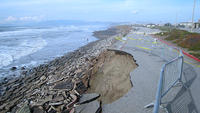
The stormy conditions of the 2009-10 El Nino winter eroded beaches from San Diego to Seattle to often unprecedented levels; the higher sea levels expected due to global warming, and potentially even stronger winter storms, will likely to contribute to increased rates of beach and bluff erosion along much of the U.S. West Coast
-
-
Preparing for the worst
Nearly three quarters (73 percent) of companies surveyed by AT&T are calling business continuity a priority in 2011, and almost half of them are seriously thinking about using cloud technology to help them deal with terrorism threats, security breaches, the problems that come when the power goes out or the weather turns extreme
-
-
Japan's prime minister pushes to end nuke program
Japan could soon be following in the footsteps of Germany and shut down its nuclear energy plants; at a televised press conference on Wednesday, Prime Minister Naota Kan pushed to end Japan’s nuclear program; “Japan should aim for a society that does not depend on nuclear energy,” Kan said
-
-
Malware imported into U.S. on foreign-made components
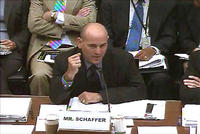
A high level DHS official acknowledged that malware built into imported electronic components sold in the United States poses a serious threat to U.S. economy and security; he also said it was a complex threat which the federal government has been trying to address in different ways; Greg Schaffer, acting deputy undersecretary for the National Protection and Programs Directorate at DHS, said the threat is “one of the most complicated and difficult challenges we have”
-
-
Securing critical infrastructure: portfolio based approach
Bryan Ware, the CEO and co-founder of Digital Sandbox, a firm that provides risk analysis and management software and services to the private and public sectors, was recently interviewed by Homeland Security NewsWire’s executive editor Eugene Chow; Ware discusses a portfolio based approach to securing critical infrastructure, what the government can do better to protect critical assets, and the dangers of taking a “Whack-a-Mole” tactic with national security threats
-
-
Volunteers help California build quake sensor network
Thousands of residents across California are helping the U.S Geological Survey (USGS) build a dense network of seismic sensors across the state; as part of the Quake Catcher Network, Californians are being asked to place 6,000 seismic sensors in their homes to help geologists study earthquakes
-
-
Sector Report for Monday, 11 July 2011: Infrastructure protection
This report contains the following stories.
Plus 1 additional story.
-
-
IBM helps Sensus secure the smart grid
In a move that could help bolster U.S. smart grids against cyberattacks, Sensus recently announced that it will incorporate IBM’s encryption and key management technologies into its smart grids; the company will use IBM’s cyber security solutions in its FlexNet communications system for electric, gas, and water utility smart grid endpoints including meters and automated distribution devices
-
-
U.K. awards 160 million Pound nuclear decommissioning contracts
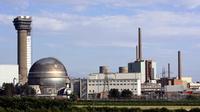
The decommissioning of one of U.K. oldest nuclear plants — Sellafield, located close to the village of Seascale on the coast of the Irish Sea in Cumbria, England — has taken a giant step forward thanks to the awarding of three waste retrieval contracts worth more than 160 million Pounds
-
-
Fire retardant shows promise -- if given space
Scientists have demonstrated that the more widely and uniformly dispersed nanoscale plates of clay are in a polymer, the more fire protection the nanocomposite material provides; when polymer — a type of polystyrene, used in packaging, insulation, plastic cutlery, and many other products — is imbued with nanometer scale plates of montmorillonite, the combination can create a material with unique properties or properties superior to those achievable by each component — clay or polymer — on its own
-
-
Montana floods exacerbate Exxon oil spill
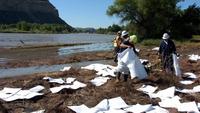
Flooding in Montana has exacerbated the effects of an oil spill and made clean up more difficult for Exxon Mobil; it is estimated that roughly 750 top 1,000 barrels of crude oil have leaked into the Yellowstone River near Billings, Montana; the pipeline has been shut down, but flooding in the area has made it difficult for clean-up crews to find the source of the leak
-
-
Nuclear safety journal launched
Three Mile Island, Chernobyl, Fukushima: for the third time in twenty-five years a nuclear power plant suffered a serious accident, precipitating a global review of the way to govern nuclear safety and security; a publisher of scientific journal is launching a new journal — International Journal of Nuclear Safety and Security (IJNSS) — which will offer a forum for the serious discussion of nuclear power plants’ safety
-
-
45 percent of children in Fukushima exposed to thyroid radiation

A survey revealed that 45 percent of children living near the Fukushima Daiichi nuclear power plant have been exposed to thyroid radiation; following the nuclear disaster and the revelation that radiation was leaking from reactor no. 1, researchers tested more than 1,000 children from newborns to age fifteen in the Fukushima Prefecture; children were found to have been exposed to 0.04 microsievert per hour or less in most cases
-
-
Quake-resistant superelastic alloy developed
Japanese scientists added a small amount of nickel to an iron-based alloy, and found that the new material can recover its original shape at any temperature from -196 to 240 degrees Celsius; the material may be used in environments that are constantly exposed to extreme temperatures, such as joints and controls in cars, planes, and spacecraft; it may also help buildings cushion stress and violent movement in earthquakes
-
-
New York governor determined to close Indian Point nuclear plant
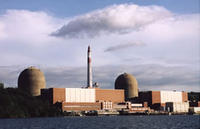
The Indian Point nuclear power plant, located thirty-five miles north of New York City, is facing increasing pressure from Governor Andrew Cuomo and senior officials say the governor is determined to shut it down; the governor’s hand has been strengthened by new legislation that streamlines the approval process for siting new power plants in New York, a move that would make it easier to replace Indian Point; closing the nuclear plant would be a major step toward reshaping the state’s energy policy as the plant produces 2,000 megawatts and provides New York City and Westchester with 25 percent of their power — but the nuclear disaster in Japan caused by the 11 March earthquake and tsunami raised fresh concerns about the plant, which is located near a fault line
-
More headlines
The long view
Falling Space Debris: How High Is the Risk I'll Get Hit?
An International Space Station battery fell back to Earth and, luckily, splashed down harmlessly in the Atlantic. Should we have worried? Space debris reenters our atmosphere every week.
Using Drone Swarms to Fight Forest Fires
Forest fires are becoming increasingly catastrophic across the world, accelerated by climate change. Researchers are using multiple swarms of drones to tackle natural disasters like forest fires.
Strengthening the Grid’s ‘Backbone’ with Hydropower
Argonne-led studies investigate how hydropower could help add more clean energy to the grid, how it generates value as grids add more renewable energy, and how liner technology can improve hydropower efficiency.
LNG Exports Have Had No Impact on Domestic Energy Costs: Analysis
U.S. liquified natural gas (LNG) exports have not had any sustained and significant direct impact on U.S. natural gas prices and have, in fact, spurred production and productivity gains, which contribute to downward pressure on domestic prices.
